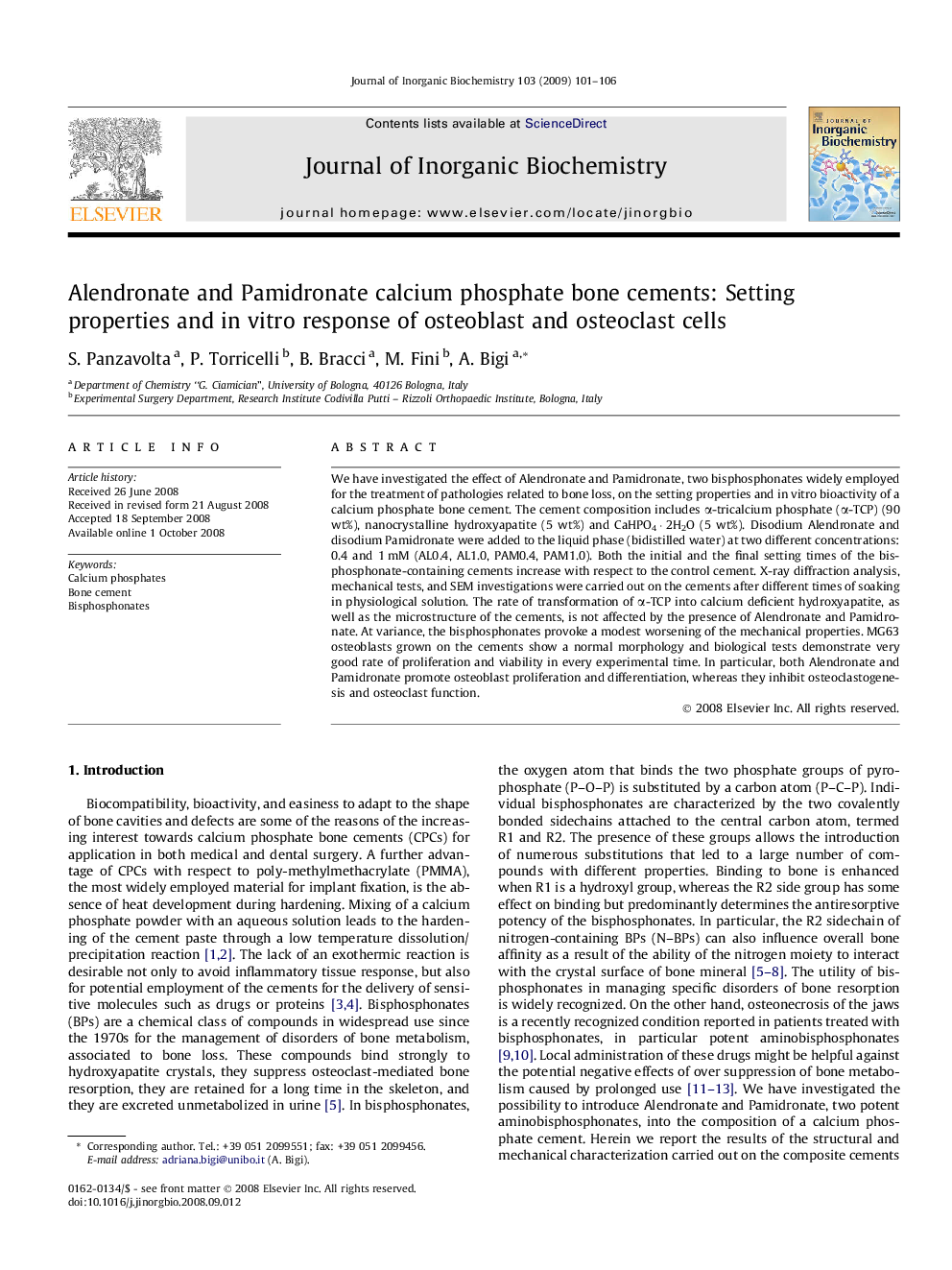| Article ID | Journal | Published Year | Pages | File Type |
|---|---|---|---|---|
| 1316878 | Journal of Inorganic Biochemistry | 2009 | 6 Pages |
We have investigated the effect of Alendronate and Pamidronate, two bisphosphonates widely employed for the treatment of pathologies related to bone loss, on the setting properties and in vitro bioactivity of a calcium phosphate bone cement. The cement composition includes α-tricalcium phosphate (α-TCP) (90 wt%), nanocrystalline hydroxyapatite (5 wt%) and CaHPO4 · 2H2O (5 wt%). Disodium Alendronate and disodium Pamidronate were added to the liquid phase (bidistilled water) at two different concentrations: 0.4 and 1 mM (AL0.4, AL1.0, PAM0.4, PAM1.0). Both the initial and the final setting times of the bisphosphonate-containing cements increase with respect to the control cement. X-ray diffraction analysis, mechanical tests, and SEM investigations were carried out on the cements after different times of soaking in physiological solution. The rate of transformation of α-TCP into calcium deficient hydroxyapatite, as well as the microstructure of the cements, is not affected by the presence of Alendronate and Pamidronate. At variance, the bisphosphonates provoke a modest worsening of the mechanical properties. MG63 osteoblasts grown on the cements show a normal morphology and biological tests demonstrate very good rate of proliferation and viability in every experimental time. In particular, both Alendronate and Pamidronate promote osteoblast proliferation and differentiation, whereas they inhibit osteoclastogenesis and osteoclast function.
